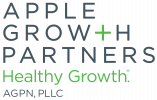Key Points to Communicate to ESOP Participants

By Eric Flickinger, CPA/ABV | Manager, Business Valuation
The discounted cash flow (DCF) method is an advanced topic in financial courses. So, explaining the process to individuals that haven’t spent time studying finance can be somewhat complicated. However, if you’re an employee stock ownership plan (ESOP) participant, it’s critical to have a basic understanding of DCF and how it impacts value. Understanding three key points can maximize employee engagement and help drive share price growth.
1) Basic Concept
First, ESOP participants should understand the basic concept of the DCF method: a company is worth the sum of all future cash flows discounted back at the appropriate rate of return. Not the easiest thing to grasp unless you live in the financial trenches. I’ve found an easier way to explain by relating it to something everyone has heard of – the lottery.
When luck strikes, and you win a large payout in the lottery, you have a choice for the payout – you can choose it over a certain number of years or a lump-sum. The payout over a certain number of years can be compared to the businesses annual cash flows. The lump sum payout is comparable to the value of the company since the lump sum payout is equal to the present value of future cash flows.
2) Cash Flow is King
Cash flow generation is a critical factor in increasing the value of a company and the piece that participants can affect most. Cash flow is not the same as net income, so it can be challenging to differentiate. Increasing cash flow boils down to optimizing profitability, working capital, and capital expenditures. Participants should be aware that keeping excess inventory, delaying sending out invoices and not following up on balances outstanding reduces a company’s cash flow. Similarly, requesting the purchase of exciting new equipment that is rarely utilized also hurts cash flow. However, increasing working capital or capital expenditures that leads to higher profitability can improve cash flow in the long-term. Optimization will vary significantly from company to company.
3) Non-Financial Factors
The DCF method picks up non-financial factors as well. These non-financial factors are considered risks to the cash flows. The important reminder is the higher the risk to cash flows, the higher the discount rate used in the DCF method, and the lower the value of a company. Many risks cannot be controlled by the company and are a part of the environment the company operates. Others relate to investing in a small private company being riskier than owning a government bond. Factors such as management team strength, customer diversity, and company reputation are factors at some level can be controlled by the company.
The DCF method is a prevalent method used in valuing employee stock ownership plans. Communication is critical to driving employee engagement. However, understanding value is not an easy task. These three key points and communication ideas can be a starting point for helping ESOP participants understand how the DCF works. Contact me today if you have further questions on understanding DCF and how it applies to your ESOP.

